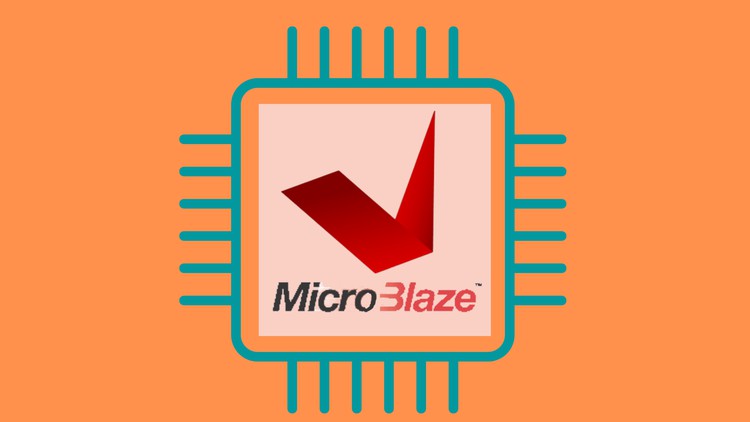Embedded System Design with Microblaze and Vitis IDE
Working with Vitis 2020.2 Design Suite and Vivado Design Suite
What you’ll learn
Embedded System Design with Microblaze and Vitis IDE
-
Embedded System Design flow with Xilinx Vitis 2020.2
- Microblaze devices can be used to write C programs.
- Debugging of both software and hardware.
- Microblaze-based designs: How to handle interrupts.
- Drivers for Xilinx are explained.
Requirements
- The ability to understand digital electronics.
- The basics of computer architecture.
Description
FPGAs are a popular choice for a wide range of applications because they can be quickly reconfigured.
Smart software is needed to make the hardware work together to achieve the desired application. This course teaches the basics of some of the most popular Xilinx drivers, such as UART, AXI Timers, UART16550, AXI GPIO, AXI BRAM, and more. The course also shows how to use the AXI interrupt controller to deal with Interrupts.
The Microblaze is an FPGA-based Soft Processor that can run one instruction per cycle with very few exceptions. The MicroBlaze interconnect can be changed so that it can communicate with a wide range of peripherals to meet most of the needs of medium-sized applications. It lets you change the size of the cache, the number of pipelines, the peripherals, the memory management unit, and the bus interface so that it fits your needs. If you have a lot of complicated systems, Microblaze will play a big role in the non-Zynq based FPGA families. It will be the best light-weight alternative to working with the Zynq hard processor in the Zynq and Ultrascale based FPGA families.
Who this course is for:
- Anyone who wants to learn more about Xilinx Microblaze devices with the Xilinx Vivado and Vitis IDEs.
- With FPGA Soft Processors, you can make embedded systems.










